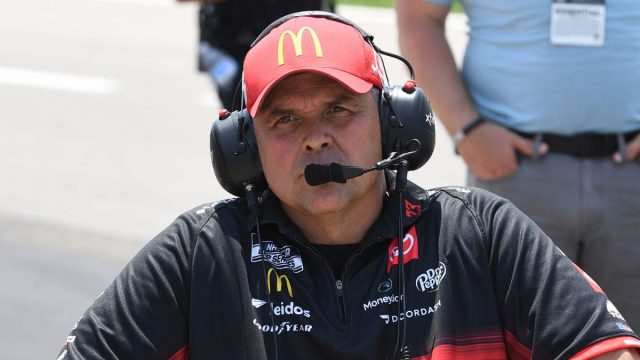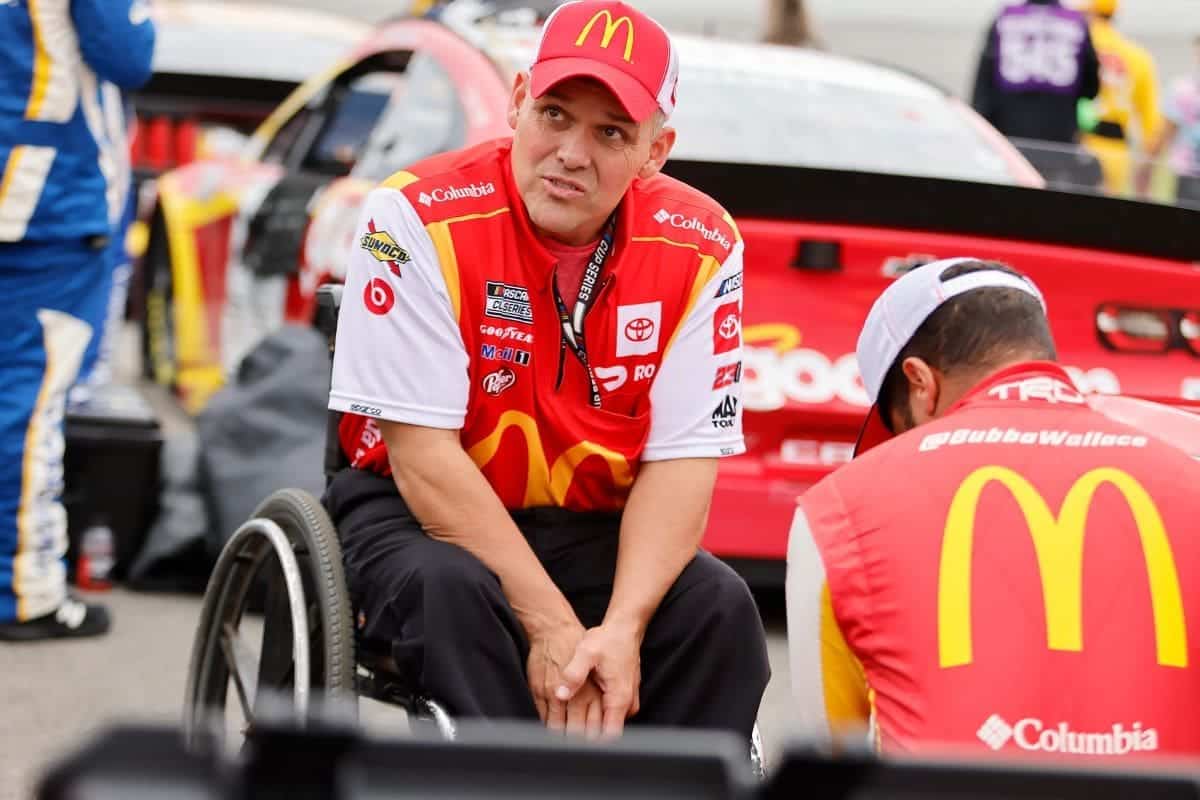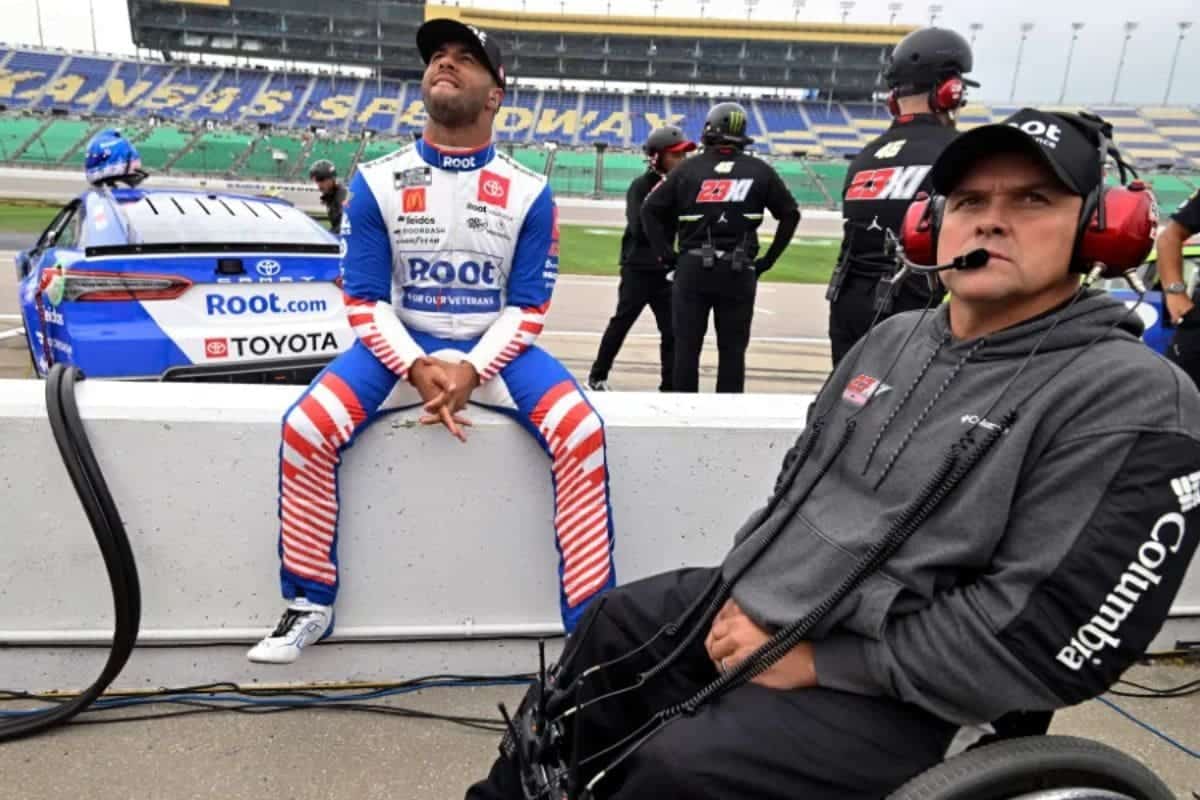Bootie Barker Keeps 23XI’s Kansas Victory Secret: In NASCAR, the victories of 23XI Racing at Kansas Speedway under the strategic guidance of Bootie Barker has sparked considerable intrigue. Barker’s decision to withhold the specifics of their winning formula is a calculated move, reflective of a broader strategy that values the element of surprise and competitive secrecy. This approach not only highlights the critical role of strategic planning in motorsports but also poses questions about the evolving dynamics of race strategy secrecy.
Key Takeaways
- Bootie Barker strategically withholds race strategies to maintain a competitive edge in NASCAR.
- Barker’s discretion highlights his deep understanding of the sport’s competitive nature.
- The success at Kansas likely involves advanced data analytics and dynamic race adjustments.
- 23XI Racing’s careful preparation and adaptability contribute to their performance.
- Barker and driver Bubba Wallace’s synergy is crucial in maximizing the car’s capabilities on track.
Bootie Barker Keeps 23XI’s Strategies Under Wraps
Although repeatedly pressed by the media, Bootie Barker, the experienced crew chief for Bubba Wallace at 23XI Racing, consistently refrains from revealing the strategic strategies that have led to their repeated successes at Kansas Speedway. This deliberate discretion highlights a deep understanding of the competitive nature of NASCAR racing, where even the slightest advantage can make a significant difference. Barker’s silence may be interpreted not just as a protective measure for team tactics but also as a strategic tactic in itself.
“I don’t know.” Barker said, “We don’t do anything particularly different. It’s just a good racetrack for you. I guess it’s just a good racetrack for us. I mean, we, yeah, I could give all without getting to your point. Without us taking two hours and really getting into everything we do and why and maybe why it works and all this stuff, which I can’t do anyway. But it’s not something that we do in particularly differently as far as approach or anything else.”
The intricacies of race strategy in NASCAR are profound, involving much more than just the basic setup of the car. They encompass the adjustment of the vehicle to track conditions, race-day decisions on tire changes, fuel management, and the timing of pit stops, all of which are essential for success at a track like Kansas Speedway, known for its variable weather conditions and wear-intensive surface. Barker, with years of experience in motorsports, is likely leveraging a complex array of data analytics and real-time race simulations to adjust strategies dynamically—a methodology too valuable to share openly.
Speculation Surrounding 23XI’s Success at Kansas
The consistent success of 23XI Racing at Kansas Speedway has fueled widespread speculation about the unique factors contributing to their performance. Despite Bootie Barker’s insistence that the team does not employ any special strategies specific to the track, the racing community continues to ponder over the elements that might be giving 23XI an edge. The enigma surrounding their repeated victories suggests a convergence of subtle yet effective tactics, impeccable timing, and perhaps an intricate understanding of the track that they are not disclosing.
- Team Synergy and Communication: The seamless interaction between the driver, pit crew, and strategists might be fine-tuned to exploit Kansas Speedway’s unique characteristics more effectively than their competitors.
- Advanced Data Analytics: 23XI could be leveraging sophisticated data analysis tools that provide deeper insights into track conditions, weather patterns, and vehicle performance, thus allowing them to make more informed decisions during the race.
Previewing 23XI’s Dominance at Kansas
Building on their established record, 23XI Racing approaches the upcoming Kansas Speedway race with a history of notable achievements in the Next-Gen car era. Since the groundbreaking vehicle’s inception, the team has consistently demonstrated strong performances that are not just flashes in the pan, but a proof of their strategic expertise and technical skills. With Bubba Wallace and Tyler Reddick at the wheel, victories at this track have highlighted the team’s ability to optimize car setup and race strategy to exploit the unique demands of Kansas Speedway.
Analyzing their prior successes, one can discern a pattern of careful preparation and adaptability. The track, characterized by its variable banking and smooth surface, demands a balanced approach to tire wear and aerodynamic efficiency. 23XI has excelled in configuring their cars to maintain ideal grip and balance throughout the race duration, an aspect important in managing the track’s middle to high-speed corners effectively.
Furthermore, the team’s data-driven approach to race strategy, focusing on pit stop efficiency and on-the-fly adjustments in response to race dynamics, has been paramount. This adaptability will likely be a significant factor in their upcoming performance. With the evolution of the Next-Gen car setups and a deepening understanding of its performance envelope, 23XI Racing is poised to utilize their past learnings and recent technological advancements.

23XI’s Performance with the Toyota Camry XSE
23XI Racing’s deployment of the 2024 Toyota Camry XSE at Kansas Speedway highlights a significant evolution in vehicle performance, particularly regarding efficiency and downforce. This model, praised by former Hendrick Motorsport CEO Steve Letarte, is tailored for the unique challenges of low grip mile and a half racetracks, like Kansas. The improvements in the Camry XSE are not just incremental; they are indicative of a deeper commitment to leveraging advanced engineering to achieve superior race outcomes.
“This new Camry seems to have super efficient downforce. It will really show up when those tires age at Kansas, what is known as a low grip mile and a half racetrack.”- Steve Letarte
The 2024 Toyota Camry XSE’s design enhancements are pivotal in pushing the boundaries of what can be expected on the track. The integration of cutting-edge aerodynamics with a refined focus on fuel efficiency allows the car to maintain high speeds while conserving resources, a critical factor in long races.
- Aerodynamic Optimization: Enhanced downforce and reduced drag enable more stable and agile handling, vital for the variable winds and speeds at Kansas.
- Efficiency Boost: Adjustments in the powertrain and fuel management systems ensure that the vehicle uses fuel more effectively, prolonging its endurance and performance during critical race phases.
- Strategic Engineering: Every component of the Camry XSE has been scrutinized and optimized for performance, from suspension tuning to weight distribution, ensuring a holistic improvement that aligns with the significant challenges of competitive racing.
Predicting the Outcome
Given the advancements in the 2024 Toyota Camry XSE, predictions lean towards 23XI Racing maintaining a competitive edge at Kansas Speedway, though challenges from teams like Hendrick Motorsports cannot be underestimated. The enhanced aerodynamics and engine performance integrated into the Camry XSE provide 23XI Racing with a potentially superior platform.
Analyzing past performance trends and current season data is important. 23XI has shown remarkable adaptability to diverse track conditions, a reflection of their robust engineering team and the strategic expertise of crew chief Bootie Barker. Their ability to utilize high-speed stability with the Camry XSE’s improved downforce characteristics might give them the edge on Kansas’s 1.5-mile tri-oval, which demands high-speed cornering and efficient straight-line speed.
Conversely, Hendrick Motorsports has a storied history of excelling at intermediate tracks like Kansas. Their team’s depth, combined with extensive resources, means they can adjust their strategies in response to on-track developments, potentially offsetting the technological edge held by 23XI.
News in Brief: Bootie Barker Keeps 23XI’s Kansas Victory Secret
The strategic reticence displayed by Bootie Barker and the 23XI Racing team highlights a sophisticated appreciation of NASCAR’s intricate competitive dynamics. By safeguarding their tactical approaches, particularly at Kansas Speedway, the team not only preserves a tactical advantage but also exemplifies the critical role of data-driven strategies and adaptability in motorsports. This approach, coupled with the synergistic performance of Barker and Wallace, solidifies their position as formidable contenders within the NASCAR series.
Our Reader’s Queries
Q. How did Bootie Barker become disabled?
A. “Barker, 53, shared, ‘I’ve mostly kept to myself.’ He faced paralysis after a car accident at 17.”
Q. What happened to Bootie Barker?
A. “He suited up as a linebacker on the football field, but a car accident during his senior year at Halifax County High School left him paralyzed from the waist down.”
Q. Has Bootie Barker always been in a wheelchair?
A. “Barker, wheelchair-bound since a high school car crash, serves as Bubba Wallace’s crew chief, stealing the spotlight in “Full Speed.” Whether sending Netflix execs packing or sharing a whiskey post-defeat, his Southern Virginia charm shines through in his sharp, one-liner quips.”
ALSO READ: Bootie Barker’s NASCAR Journey: Fast-Track to Stardom Unveiled!


